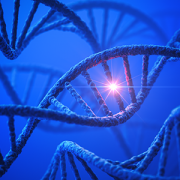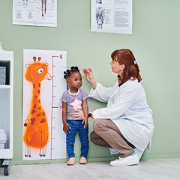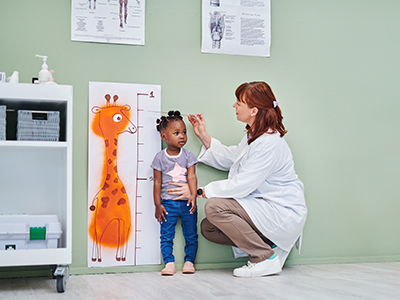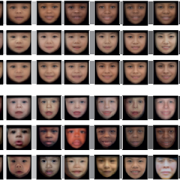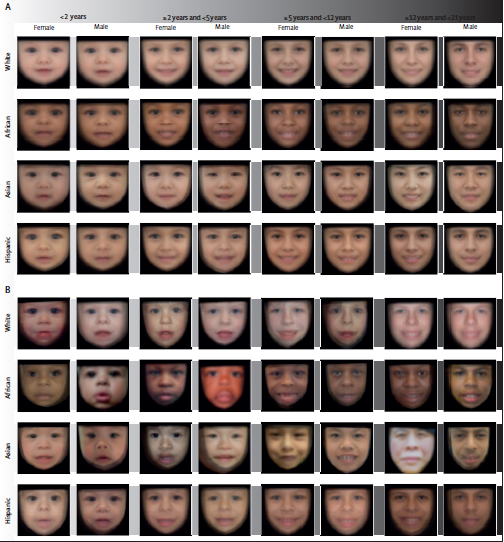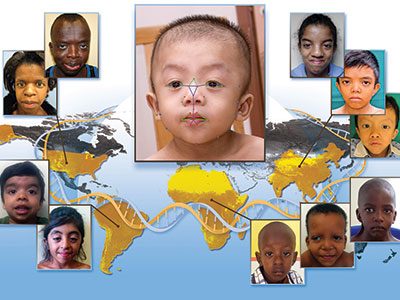Breaking barriers in growth disorder treatment for families
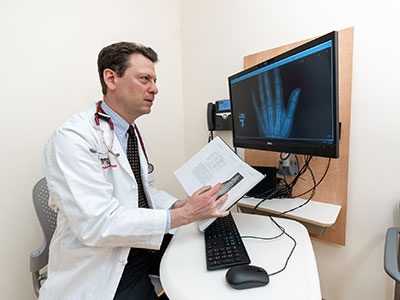
Children with hypochondroplasia were previously left with no options for effective long-term treatment, but Andrew Dauber, MD, MMSc, and his team continue to see promising results for treating children with hypochondroplasia using vosoritide.
Paving new roads for families at dead ends
For many children with short stature and other rare genetic growth disorders, there have been no next steps after usual treatment options prove ineffective. Researchers at Children’s National Hospital are digging deeper to find the root genetic causes of short stature disorders and creating novel, nuanced treatment options that have the opportunity to change how the field approaches these cases. From the creation of the growth specialty clinic to creating a study for one patient, the endocrinology team at Children’s National is focused on treating children with the uniqueness that their growth disorders require.
Hypochondroplasia
Many short stature disorders are caused by genetic variations that slow the growth of cells in the growth plate.
Children with hypochondroplasia were previously left with no options for effective long-term treatment, but Andrew Dauber, MD, MMSc, chief of Endocrinology at Children’s National, and his team continue to see promising results for treating children with hypochondroplasia using vosoritide. This drug had previously been approved for treatment of children with achondroplasia, the most common form of dwarfism. Treatment of hypochondroplasia has shown similar and, often, even better results. Study participants have managed the treatment well and have overall been very satisfied with the results.
Children’s National is the only site in the world offering this treatment to patients. The study includes over 50 children from two distinct subsets of patients — those with hypochondroplasia and those with other genetic short stature disorders such as RASopathy conditions, most common of which is Noonan syndrome, and children with mutations in the aggrecan and NPR2 genes. The study has found a significant increase in growth rates for children with hypochondroplasia who underwent treatment with vosoritide for one year.
“These are the first patients in the world to ever receive this medication for their conditions,” said Dr. Dauber. “The results are very promising and may change the way we practice medicine. Patients have come from all over the world to participate in the study.”
The preliminary data is even more promising for children in the study with other genetic conditions, which include defects that are more directly related to C-natriuretic peptide (CNP), which vosoritide targets directly. This is the first medication that directly targets the pathway in chondrocytes (cells in the growth plate that make the bones grow longer) affected by these specific mutations. Those patients are still undergoing their first full year of treatment and results of that section of the study are expected to be released next fall.
“We’re really starting to see this therapeutic landscape open up and develop for patients with this rare condition, for which right now there is no approved therapy, so really exciting times in this space,” says Dr. Dauber.
ACAN study
Dr. Dauber was a part of a study that was the first-of-its-kind to provide genetic testing for children with short stature and their families, finding ACAN gene mutations in multiple family members, and providing hormone therapy to the children impacted. The ability to diagnose this type of gene mutation allows families to be proactive with treatments — both as their child is growing and how other family members can reduce the risk of further complications down the road.
“We’re at the tip of the iceberg with research that explores this gene mutation,” says Dr. Dauber.
Study of one
This type of unique and cutting-edge research isn’t new to the endocrinology team at Children’s National, who is focused on creating unique interventions to find answers for patients and families. When a patient with short stature was found to have a unique mutation in his growth hormone receptor, Dr. Dauber and his team created a single patient trial with a precision medicine approach to overcome the patient’s growth hormone resistance. This isn’t the first time Dr. Dauber led a single patient study. Even when study populations are small, unlocking genetic answers and treatment options for even one patient is at the core of work being done at Children’s National. Dr. Dauber emphasized the importance of these findings for the medical community, particularly for those dedicated to pediatric endocrinology. He noted that understanding the nuanced responses among different children is crucial for optimizing future treatments.
What’s next
Even with improved height and growth outcomes, there is still more to uncover. In addition to the world’s first clinical trial using vosoritide in children for hypochondroplasia, Children’s National researchers are studying the quality of life for children with the disorder and how it may be affected by treatment, aiming to provide this full scope of care for children with these rare conditions. Dr. Dauber and his team continue to study connections between genetic biomarkers and response rates to clinical therapies, with hopes of discovering how these targeted approaches to treatment can be most effective. The work done by the team at Children’s National has shown results to warrant phase three of the trial.
“This ongoing commitment to innovative research underscores the relentless pursuit of targeted therapies, bridging gaps and bringing hope to families and patients worldwide,” says Dr. Dauber.



